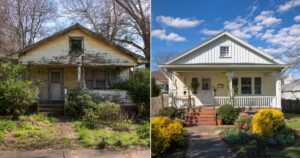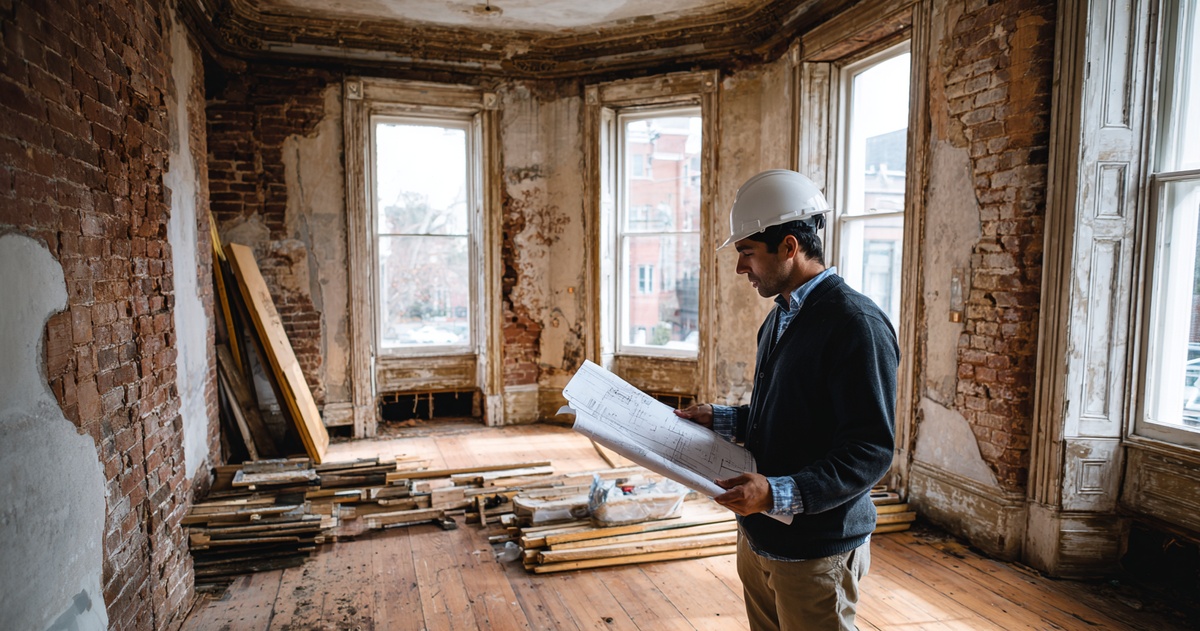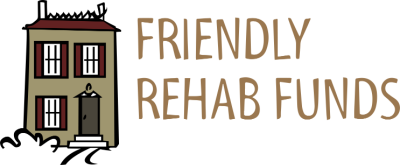After evaluating over 1,200 properties in the last decade as a hard money lender in Virginia, I’ve seen investors lose fortunes on bad ARV calculations. I’ve also counseled seasoned flippers out of deals where they were $100,000 off on their valuations. The difference between success and failure in Virginia real estate, and other markets, often comes down to one number: your After-Repair Value.
What’s Inside This Guide
- Why ARV Calculations Make or Break Your Deal
- Calculating ARV in Richmond’s Competitive Market
- Norfolk’s ARV Factors: Exit Strategies
- My Step-by-Step Comp Analysis Process
- Which Renovations Actually Add Value in Virginia
- The $100,000 Mistakes I’ve Seen of Late
- Essential Tools for Virginia Investors
Why ARV Calculations Make or Break Your Deal
When I opened Friendly Rehab Funds after hearing 40 investors at a Richmond ARIA meeting say they needed financing, I realized most people didn’t understand the fundamental truth about hard money lending. We don’t lend based on what a property is worth today. We lend based on what it will be worth after you renovate it.
Your ARV determines everything: how much I can lend you, whether you’ll make a profit, and whether you should even buy the property in the first place. I provide free evaluations to investors, usually the same day they call, because I’ve seen too many people get burned by wishful thinking disguised as market analysis.
Just two weeks ago, an investor showed me a property near Charlottesville. He thought he could sell it for $350,000. I had to tell him the hard truth: in his specific area, they’d sold ONE new build in the last year, four more were sitting on the market, and nine builders were waiting for buyers. His ARV was not accurate as the one new build comparable sold for less than $300,000.
The 70% rule that most investors follow says you shouldn’t pay more than 70% of the ARV minus repair costs. But that ARV number has to be RIGHT. If you’re off by even 10%, you could be underwater before you swing your first hammer.

Calculating ARV in Richmond’s Competitive Market
Richmond’s market moves fast. With about 40% of my business here, I’ve watched neighborhoods transform and values shift block by block. The median home price sits around $400,000 to $445,000, but that number means nothing if you don’t understand the specific dynamics of each neighborhood.
Take the Fan District, for instance. Those Victorian row houses command premium prices, but only if you respect their historic character. I’ve seen investors gut these properties and install modern everything, thinking they’re adding value. They’re not. Buyers in the Fan want original hardwood floors, intricate moldings, and fireplace mantels. They want modern kitchens and bathrooms, yes, but within a historic shell.
When I evaluate a property in Richmond, I look at three things immediately: location within the neighborhood (values can change dramatically from one block to the next), the property’s architectural style, and recent comparable sales within the last 180 days. Anything older than that doesn’t necessarily reflect current market conditions.
Church Hill presents different opportunities. The elevated views of downtown add significant value, but the renovation costs for these 19th-century homes can spiral out of control. I always ask investors working in Church Hill: “Has the plumbing and wiring been updated?” If they don’t know, I won’t finance it. A 100-year-old home with original systems is a disaster waiting to happen.
The West End and Short Pump areas cater to families. Here, your ARV depends on creating functional, modern living spaces. Open-concept kitchens, finished basements, and good school districts drive value. The buyers aren’t looking for historic charm; they want move-in ready homes with room for their kids to play.
Another factor that comes into play is the level of renovation of the comparables you are using to establish your ARV. If you see a “knock out” renovation that far exceeds the level of your planned renovation, don’t use it as a comparable.
Richmond’s inventory problem makes accurate ARV calculations even more critical. With only 1.7 months of supply, you’re competing against multiple offers on every decent property. If your numbers are wrong, you’ll either overpay and lose money, or underbid and never win a deal.
Norfolk’s ARV Factors: Exit Strategies
An Exit Strategy on a given property is a predetermined plan an investor puts in place that guides a project’s renovation process. With 60% of my business in the greater Norfolk area, including Virginia Beach, I’ve learned that the presence of the Naval Station Norfolk can have an influence in making that determination.
Renovating a property as a rental or as a “budget priced” single family is a viable Exit Strategy. The naval base, the largest on the East Coast, creates incredible stability in the market. The constant rotation of military personnel means there’s ALWAYS demand for housing. But here’s what many investors miss: military buyers and renters prioritize practicality over luxury. They want durability, functionality, and proximity to base.
The soil in the Greater Norfolk area is another factor to consider as it seems to promote foundation issues. Also, its higher moisture content can cause an increase in termite difficulties. Based on these concerns, we require foundation and termite inspections on all deals in this area.
Renovating or building a higher end home in the Virginia Beach area is another viable Exit Strategy. Ghent reminds me of Richmond’s Fan District – walkable, historic, and stable values. But Ocean View and East Beach? Those waterfront properties can command huge premiums.
The Larchmont and Edgewater neighborhoods near Old Dominion University offer consistent demand from faculty and military officers. These buyers want quality family homes, and they’re willing to pay for them. But again, every property needs proper evaluation before you run any numbers.
Ready to get your next Norfolk or Richmond project funded? Complete our free application and I’ll personally review your deal within 24 hours.
My Step-by-Step Comp Analysis Process
After looking at thousands of properties, I’ve developed a systematic approach to finding accurate comparables. This is the exact process I use when investors call me for evaluations, and it’s why I can usually give them an answer the same day.
First, I pull only sold properties from the last 180 days. I stay within the same neighborhood – that might mean within a few blocks. If need be, we’ll go back a year to find close by comparables.
Second, I match physical characteristics as closely as possible. Square footage should be within 10-20% of your subject property. Ideally, bedroom and bathroom counts should be identical or very close. And this is crucial: the architectural style can matter enormously. A 1920s Colonial in Richmond’s West End gets compared to other Colonials, not to ranch houses.
Third, I adjust for condition. This is where most investors mess up. You can’t compare a distressed property sale to what you’ll get for a fully renovated home. I look for properties that are sold in similar condition to what you’re planning to create.
I make specific dollar adjustments for differences. In Richmond, an extra bathroom might add $8,000-15,000 to value. These aren’t numbers from a book – they’re from actual deals I’ve funded.
Here’s something appraisers won’t tell you: MLS descriptions lie. “Fully updated” might mean someone slapped white paint on everything and installed the cheapest appliances from Home Depot. I closely look at the actual listing photos before selecting comparable properties.
After adjusting three to five comparables, I don’t just average them. I give more weight to the properties that require fewer adjustments. If I had to make $50,000 in adjustments to make a comp work, it’s not really a comp.
Which Renovations Actually Add Value in Virginia
Curb appeal projects can give you the biggest bang for your buck and play an important role in coming up with a project’s after repair value.
Kitchens and bathrooms sell houses, but here’s the secret: minor updates beat major overhauls on less expensive properties. But a major upscale renovation pays big benefits in upscale homes.
I keep detailed cost data from all my funded projects. In Richmond, a complete renovation runs $15-60 per square foot for basic finishes, up to $100-250 for kitchens and bathrooms. Norfolk runs slightly higher, typically $28,000-42,000 for a full house renovation.
Always build in a 10-20% contingency. Renovation cost overruns can be mitigated by having a termite and foundation inspection which is why we require both of these inspections as a part of our loan approval conditions. Prior to our making these inspection requirements, a few of our investors were “surprised” when they discovered extensive termite damage or foundation issues after starting the demo. Having a contingency along with inspections is solid professional risk management.
The $100,000 Mistakes I’ve Seen of Late
Last year alone, I counseled two to four experienced investors out of deals where they were off by $100,000 or more on their ARV. Two ignored my advice. In all cases the properties sold very close to our projected ARV, and one investor almost went out of business.
The biggest mistake? “Skipping” over comparables near the subject property and choosing more “distant” ones. It’s also a problem when investors see “Richmond median price: $400,000” and think that’s their ARV. But a rancher in the suburbs and a Victorian in the Fan are completely different markets. You can’t compare them any more than you can compare a pickup truck to a sports car.
Another killer mistake: using asking prices instead of sold prices. I had an investor last month who based his entire ARV on what similar houses were listed for. Three of those listings had been sitting for 90 days. The asking price means nothing – only closed sales matter.
Investors also forget about market timing. ARV calculated for a spring sale won’t work if you’re selling in winter. In Virginia, that can mean a 5-10% difference in final sale price. Days on market double in winter, and your holding costs eat into profits.
Here’s one that catches even experienced flippers: assuming renovation cost equals added value. You spend $30,000 on that master suite addition, you think you’ve added $30,000 to the ARV. Wrong. The market decides value, not your contractor’s invoice.
The worst mistake I see? Falling in love with a deal and making the numbers work backward. Investors decide they want a property, then cherry-pick the highest comparables to justify their price. That’s not analysis – it’s wishful thinking with a spreadsheet.
I tell every investor who calls me: if your deal only works in a best-case scenario, it’s not a deal. Run your numbers assuming you’ll sell for 5% less than your ARV, your renovation will cost 20% more, and it’ll take two months longer to sell. If you still make money, now you have a real deal.

Essential Tools for Virginia Investors
Success in Virginia real estate requires the right tools and relationships. After ten years in this business, these are the resources I rely on every day.
First, you need MLS access through Bright MLS, which covers both Richmond and Norfolk markets. You can’t get accurate comparable data without it. Partner with a good agent who understands investment properties, not just retail sales.
For public records, Richmond has excellent online resources through the city’s property search system. Norfolk’s NorfolkAIR system is equally valuable, especially for checking flood zones. These are free, and I use them daily to verify property details.
Don’t rely on Zillow’s Zestimate or other automated valuations. They can’t account for condition, quality of finishes, or neighborhood micro-trends. They’re starting points at best, dangerous at worst.
If you are not an experienced contractor or have one that you have a high degree of confidence with, for renovation costs, nothing beats actual contractor bids. Get three bids for every project. If they’re wildly different, someone doesn’t understand the scope. If they’re all similar, you have a real number to work with.
Join local real estate investment groups. In Richmond, ARIA meetings are where I started this business. Meetup.com has groups in every city. These aren’t just networking – they’re education. You’ll learn which contractors to trust, which neighborhoods are heating up, and which hard money lenders actually close deals.
Need financing for your next flip? We fund deals other lenders won’t touch, with no appraisal fees, no lender points, and same-day draws based on photos. Apply today and find out why 94% of our clients come back.
The Bottom Line on Virginia ARV Calculations
Calculating ARV isn’t about formulas or software. It’s about understanding your specific market at a granular level. In Richmond, that means respecting historic character while modernizing function. Properly choosing comparables in Richmond and Norfolk is critical to projecting a project’s viability.
I take calls seven days a week because I know the market doesn’t stop for weekends. Two weeks ago, I did a valuation on a Friday night that saved an investor $50,000. My wife wasn’t thrilled, but that investor got the deal at $650,000 instead of the $700,000 he was ready to pay.
The most important thing I can tell you is this: be conservative with your ARV and aggressive with your renovation budget. It’s better to be pleasantly surprised than desperately trying to explain to your lender why you need another $50,000.
Every successful flip starts with an accurate ARV. Get it wrong, and nothing else matters. Get it right, and even in competitive markets like Richmond and Norfolk, you can build a profitable business. I’ve funded over 100 deals a year for the past decade, and the successful investors all have one thing in common: they know their numbers cold.
Remember, in this business, we’re not just friendly – we’re honest about what works and what doesn’t. Your ARV calculation is where that honesty matters most.



Stay In Touch